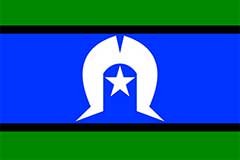Legal records, including records created by the police, the courts and the gaols, can be useful for locating information about your ancestors. In fact, these records might be the only official mention of particular Aboriginal people.
During the early periods of white settlement, police officers in isolated regions often took on the role of local magistrate and sometimes became ‘Protectors’ of Aborigines, distributing rations and carrying out government policies.
Aboriginal people also worked with the police as trackers, sometimes in special native police units.
What are police, court and gaol records?
Police, court and gaol records are a diverse range of records that date from the early decades of white settlement. They include records like:
- police station occurrence books and charge books
- records about members of the police force
- judges’ bench books and court case files
- photographs of prisoners and registers of inmates.
These records can provide many details about people’s lives.
Police gazettes are a good example of this. They were circulated to police stations and contained lists of crimes committed, escaped prisoners, warrants issued and court reports. Not all the people mentioned were on the wrong side of the law – information was published about the victims of crimes, too, and about missing persons.
What information do I need to look for these records?
You’ll need to search using a combination of these three things:
- the name of the person you are researching
- the place they lived
- the dates they lived there.
You can find useful information about police and court matters – such as newsworthy incidents, police arrests, court hearings and legal trials – in historical newspapers. It is worthwhile checking Trove Digitised Newspapers first to see what you can find.
Sometimes newspaper accounts are the only remaining record of events, since not all police, court and gaol records have been kept until today.
Where do I find police, court and gaol records?
The police, courts and gaols were run by colonial governments, then state and territory governments after 1901. This means that you will find the records in the state or territory archive for where your ancestor lived.
Family history websites like Ancestry and Find My Past provide access to some police, court and gaol records, but nothing that you can’t also access through government archives. The Centre for Indigenous Family History has indexes to some police records.
These websites are useful for doing a quick check – but because they generally only have the ‘most popular’ records, for more in-depth research you’ll need to look at the archives too.
New South Wales
See these resources from State Records NSW:
- A guide to New South Wales State archives relating to Aboriginal people – has chapters listing records relating to the police, courts of petty sessions and Supreme Court
- Index to Aboriginal colonial court cases, 1788-1838
- Police service records – has information on records about Aboriginal trackers who worked with the police
Northern Territory
From 1863 to 1910 the Northern Territory was part of South Australia. From 1911 it came under the control of the Commonwealth government until the Territory won self-government in 1978.
See these resources:
Guide to archives relating to Aboriginal people (PDF 85kb) from Northern Territory Archives Service
Northern Territory Archives Services in the Tracking Family guide
Victoria
See these resources from the Public Record Office of Victoria:
- Koorie heritage: Aboriginal records at PROV – includes links to an exhibition about the native police and to other articles of interest
- walata tyamateetj: A guide to government records about Aboriginal people in Victoria – includes a section on legal, police and prison records
- Court records
- Prison records
- Police records
You might also find information at the Victoria Police Museum and Historical Services Unit.
Queensland
See these resources from Queensland State Archives:
- Records relating to Aboriginal and Torres Strait Islander peoples (PDF 51kb)
- Police gazettes (PDF 44kb)
- Court records (PDF 329kb)
- Murder files (PDF 73kb)
- Complete list of Brief guides from Queensland State Archives
You might also find information at the Queensland Police Museum, which has material about the native mounted police and Aboriginal trackers.
South Australia
See these resources from State Records of South Australia:
You may also find information at the South Australia Police Historical Society.
Western Australia
See these resources from the State Records Office of WA:
- Aboriginal records – lists police, court and prison records relating to Aboriginal people
- Court records
- Police records
- Prison and gaol records
Tasmania
See these resources from LINC Tasmania:




